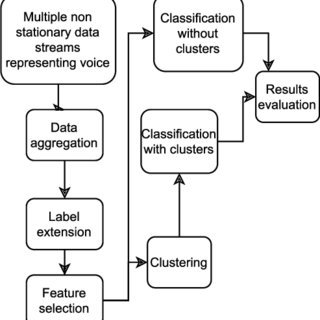In the vast landscape of the digital world, where websites sprout like wildflowers and content clutters every nook and cranny, standing out amidst the noise can be a daunting task. Search Engine Optimization (SEO) has become the beacon of hope for website owners yearning to attract organic traffic and make their mark in the online realm. But how does one navigate this labyrinth of algorithms and ever-changing rules set by search engines? The answer lies in the allure of long-tail keywords – the unsung heroes that possess the power to catapult your website to new heights of success. Brace yourself for a journey into the realm of SEO enchantment, as we unveil the magnificent potential of long-tail keywords and unlock the secrets to achieving optimal visibility and organic growth. 

The world of search engine optimization (SEO) is a vast and ever-evolving landscape, filled with countless strategies and techniques to boost website visibility and drive organic traffic. One such strategy that holds tremendous untapped potential is the use of long-tail keywords. These specific, highly-targeted phrases may not attract as much search volume as their broad counterparts, but they play a crucial role in attracting the right audience and maximizing visibility.rnrnWhen it comes to SEO, visibility is the name of the game. Leveraging long-tail keywords can greatly enhance your website’s performance in organic search results. By focusing on these longer, more specific phrases, you can better align your content with what users are actively searching for. This means higher chances of reaching individuals who are genuinely interested in what your website has to offer. Moreover, long-tail keywords tend to have less competition, giving you an opportunity to carve out a niche and establish yourself as an authoritative resource in your industry.rnrnCrafting an effective long-tail keyword strategy is key to improving your SEO performance. Start by conducting thorough keyword research to identify relevant long-tail phrases that are not only specific to your target audience but also aligned with your business goals. Consider using tools like Google Keyword Planner, SEMrush, or Ahrefs to gain insights into search volume, competition, and user intent. Once you have a list of potential keywords, integrate them strategically into your website’s content, including headings, subheadings, and in the body text. Remember to strike a balance by incorporating natural language and context, as keyword stuffing can have negative repercussions on your website’s ranking. Keep track of your keyword performance and regularly optimize and update your content to maintain relevance and keep up with changing trends.rnrn rn
rn rnUnlocking the full potential of SEO success lies in the effective use of long-tail keywords. Not only can they drive organic search traffic, but they can also contribute to higher conversion rates. Long-tail keywords allow you to target users who are further along in their buyer’s journey, meaning they are more likely to convert into customers. By aligning your content with their specific needs and displaying a deep understanding of their pain points, you can establish trust and credibility, making them more inclined to engage with your business. So, unlock the power of long-tail keywords today and witness the transformation of your SEO efforts, as you reach the right audience, maximize visibility, and elevate your conversion rates to new heights.
rnUnlocking the full potential of SEO success lies in the effective use of long-tail keywords. Not only can they drive organic search traffic, but they can also contribute to higher conversion rates. Long-tail keywords allow you to target users who are further along in their buyer’s journey, meaning they are more likely to convert into customers. By aligning your content with their specific needs and displaying a deep understanding of their pain points, you can establish trust and credibility, making them more inclined to engage with your business. So, unlock the power of long-tail keywords today and witness the transformation of your SEO efforts, as you reach the right audience, maximize visibility, and elevate your conversion rates to new heights.
Q&A
Q: What are long-tail keywords and why are they important for SEO success?
A: Long-tail keywords are specific keyword phrases that are longer and more precise than generic search terms. They are essential for SEO success as they help websites target the right audience and drive relevant traffic to their pages.
Q: How do long-tail keywords differ from short-tail keywords?
A: Short-tail keywords are typically broad, simple terms with high search volumes, while long-tail keywords are more specific and have lower search volumes. While short-tail keywords are more competitive, long-tail keywords allow websites to reach a more targeted audience.
Q: Why are long-tail keywords considered a powerful SEO strategy?
A: Long-tail keywords are a powerful SEO strategy because they attract users who are more likely to convert into customers or engage with the website’s content. They also help websites to rank higher in search engine results pages (SERPs) and stand out from the competition.
Q: How can I identify relevant long-tail keywords for my website?
A: To identify relevant long-tail keywords, start by understanding your target audience and their search intent. Use keyword research tools, analyze search trends, and consider using natural language phrases or questions that align with your website’s content or products.
Q: Are there any best practices for implementing long-tail keywords into my website’s content?
A: Yes, there are a few best practices for implementing long-tail keywords. Ensure that the keywords flow naturally within the content, and avoid over-optimization or keyword stuffing. It’s also important to optimize meta-tags, headers, and URLs with relevant long-tail keywords.
Q: Can long-tail keywords contribute to better user experience on my website?
A: Absolutely! Long-tail keywords can enhance user experience by delivering more accurate and relevant search results. When users find content that precisely matches their query, they are more likely to stay on your website, explore further, and fulfill their intended purpose.
Q: How can I track the performance of my long-tail keywords?
A: Tracking the performance of your long-tail keywords can be done through tools like Google Analytics or other SEO tracking software. Monitor your website’s organic traffic, user engagement, conversion rates, and search engine rankings to assess the effectiveness of your long-tail keyword strategy.
Q: Are there any potential challenges or drawbacks when utilizing long-tail keywords?
A: While long-tail keywords offer numerous benefits, it’s important to note that the search volume for each specific keyword might be relatively low. This means that individual long-tail keywords may not generate substantial traffic on their own. However, a collective use of various long-tail keywords can still have a significant impact on your website’s overall traffic.
Q: Should I prioritize long-tail keywords over short-tail keywords for my SEO efforts?
A: The answer depends on your specific goals and target audience. Both short-tail and long-tail keywords have their advantages. It’s often recommended to use a combination of both in your SEO strategy. Short-tail keywords can help increase visibility and generate traffic, while long-tail keywords can drive more qualified leads and conversions.
Q: What are some practical tips for effectively incorporating long-tail keywords into my overall SEO strategy?
A: Start by conducting thorough keyword research, understanding the search intent behind long-tail queries, and aligning your content with those user needs. Focus on creating high-quality and informative content that naturally incorporates long-tail keywords. Regularly analyze and optimize your strategy based on user response and search trends. Finally, stay up to date with industry changes and adapt your approach accordingly. As we come to the end of our exploration into the powerful realm of long-tail keywords, it is clear that the world of SEO holds infinite possibilities for those who dare to unlock its true potential. By delving deep into the minds of search engine users, we have discovered the hidden treasures that lie within these longer, more specific phrases.
From understanding the ins and outs of long-tail keywords, to harnessing their might in crafting captivating content, we have witnessed the immense impact they can have on driving targeted traffic and increasing conversions. These unsung heroes of the digital landscape have proven time and again that they are not to be neglected, for they possess the key to unraveling the mysteries of search engine algorithms.
As we bid adieu to this article, let us remember that the journey to SEO success is not one paved with quick fixes or shortcuts, but rather a path characterized by precision, understanding, and strategic finesse. So, dear reader, as you embark on your own expedition into the world of long-tail keywords, remember to embrace the art of specificity, immerse yourself in the minds of your audience, and create content that speaks directly to their desires and needs.
In the ever-evolving landscape of SEO, the power lies within your grasp, ready to be harnessed. So go forth, armed with the knowledge and wisdom imparted here, and may the long-tail keywords guide you towards unprecedented success.

